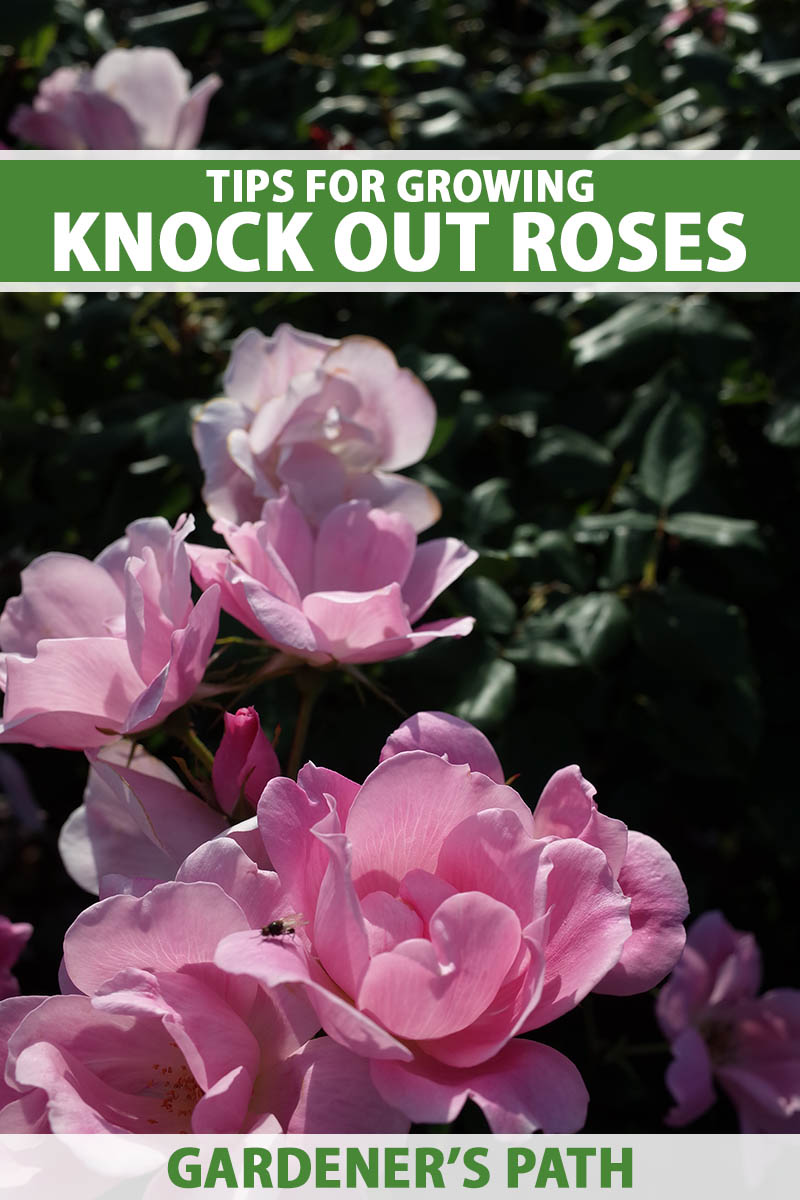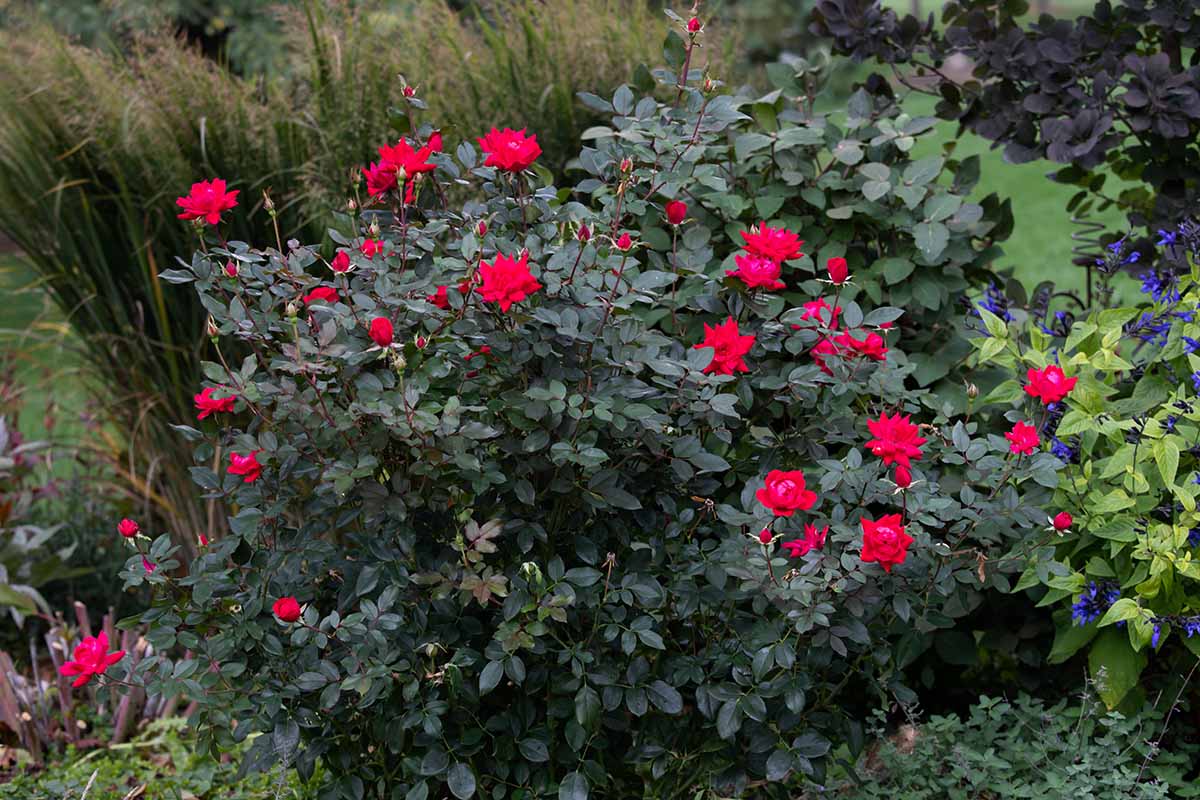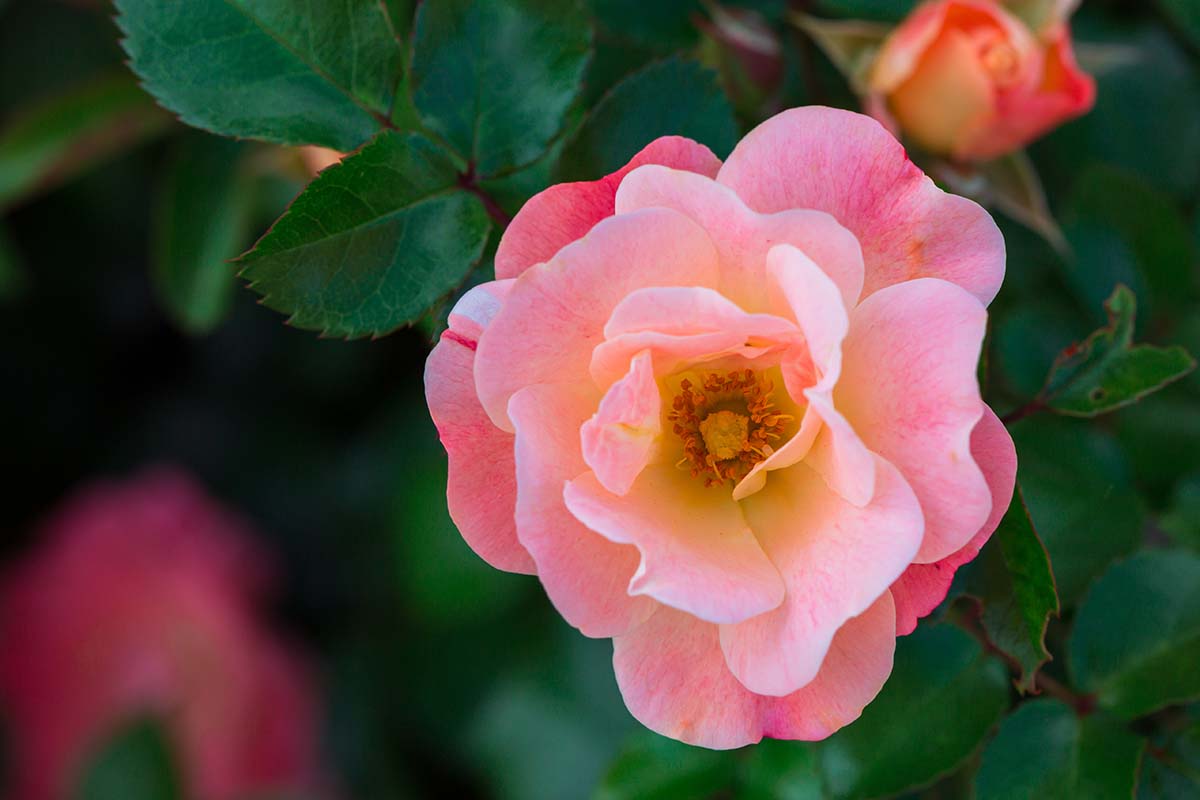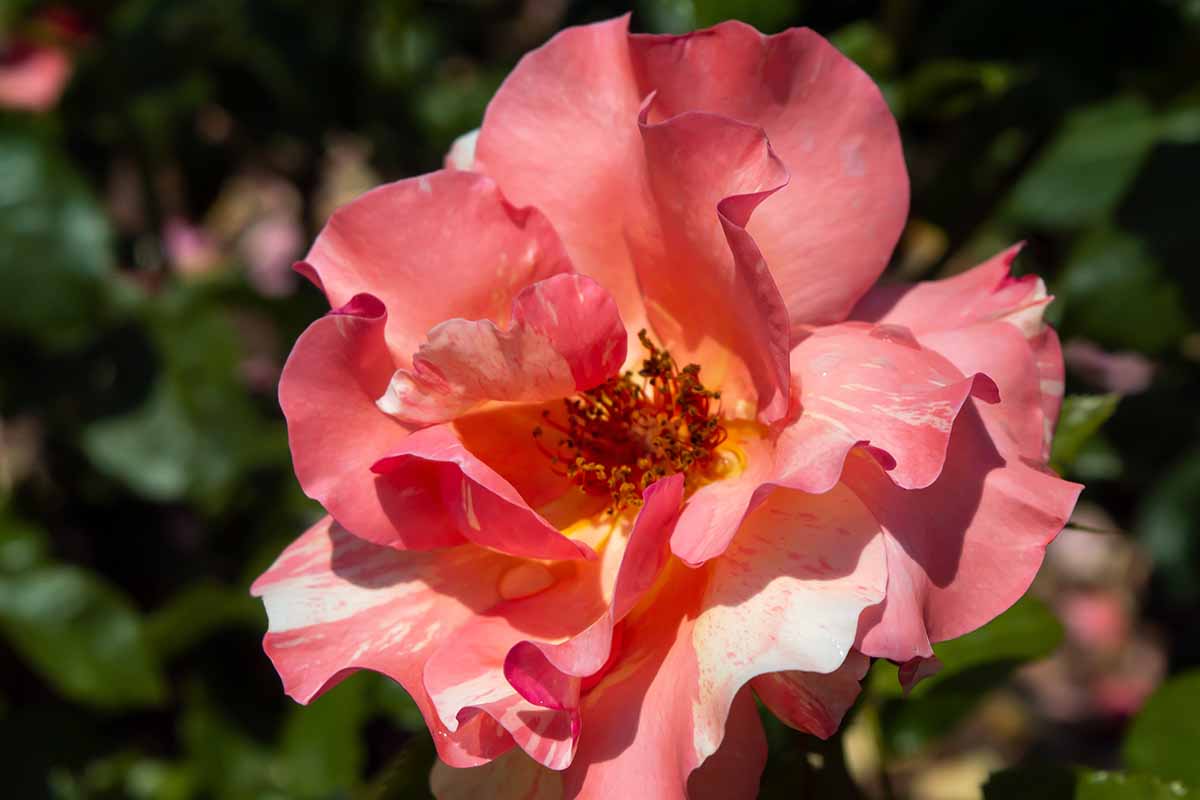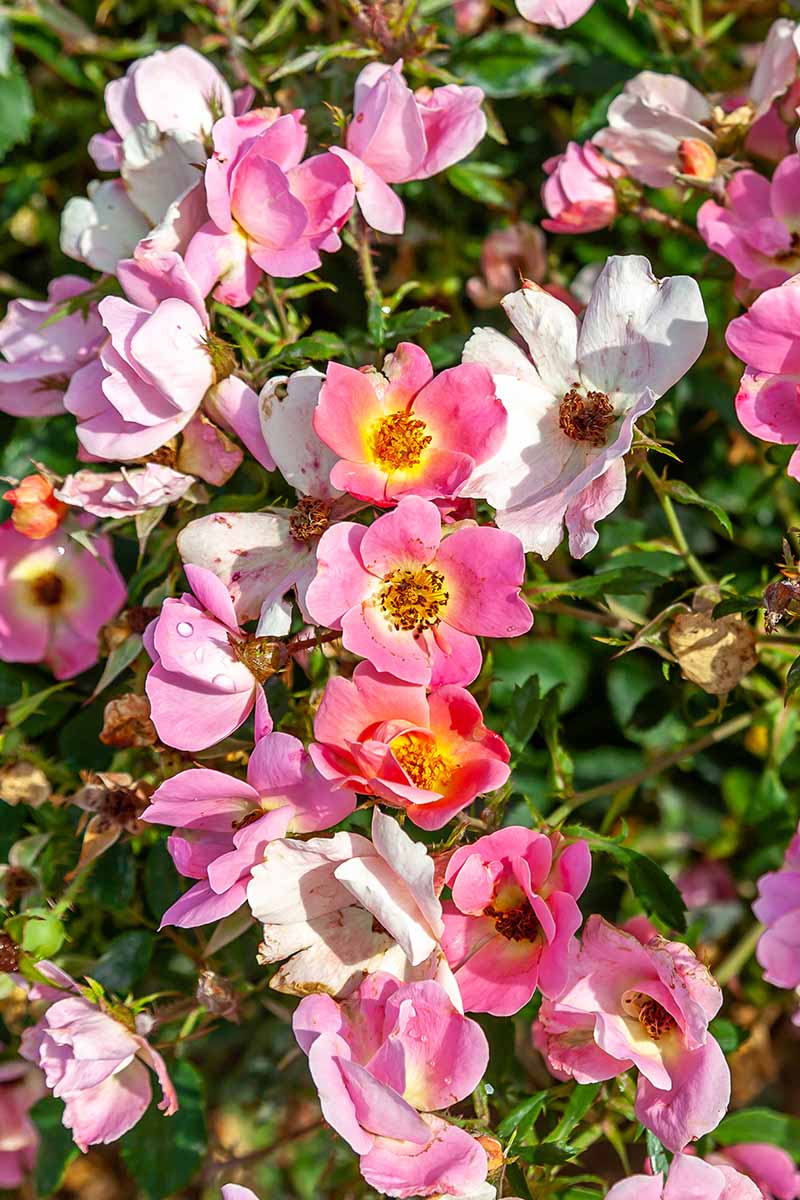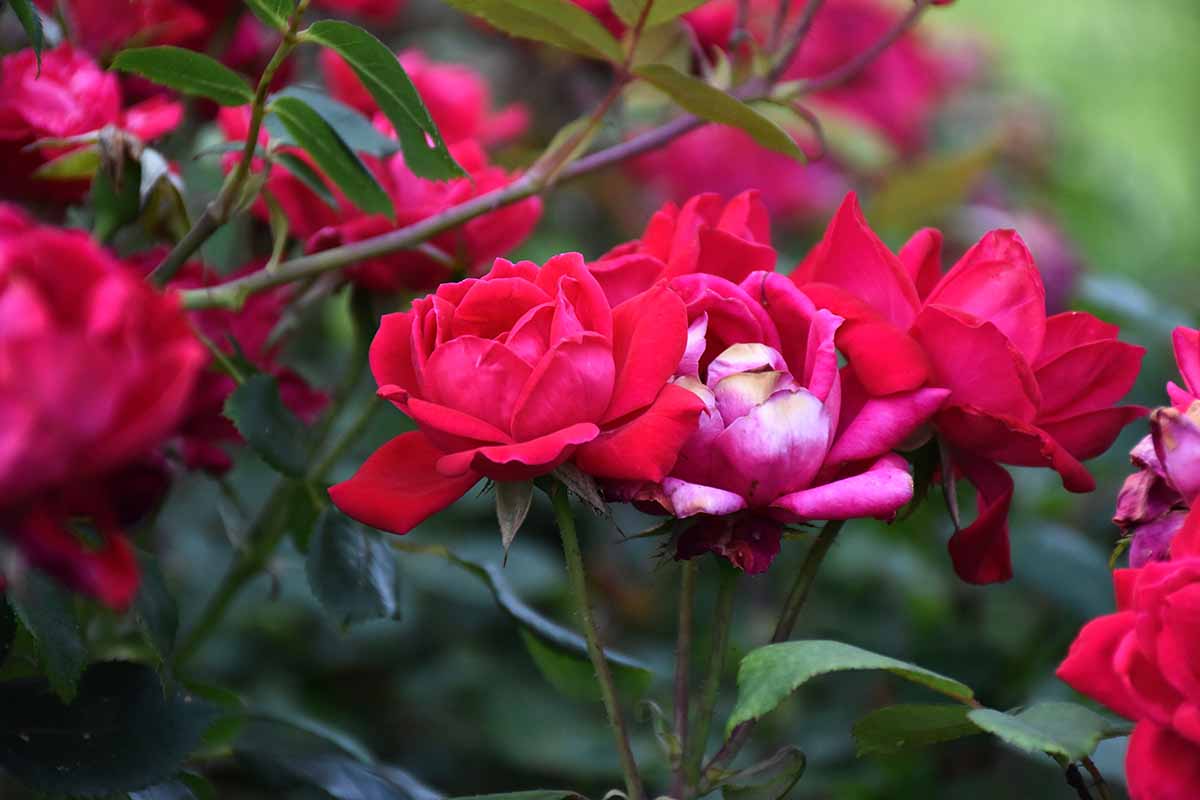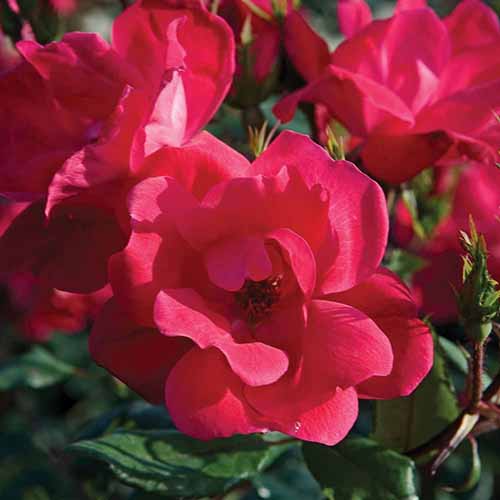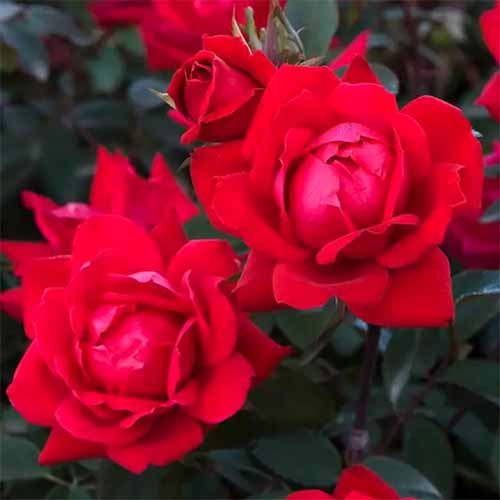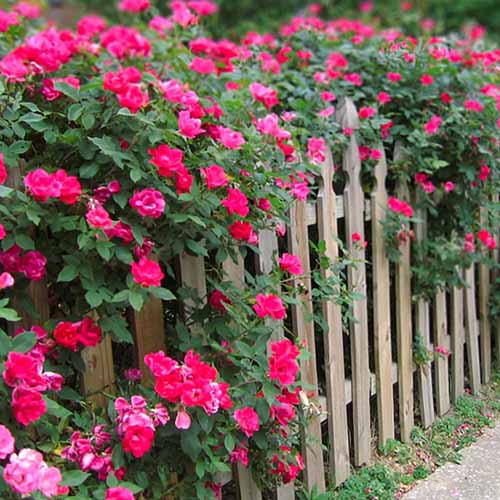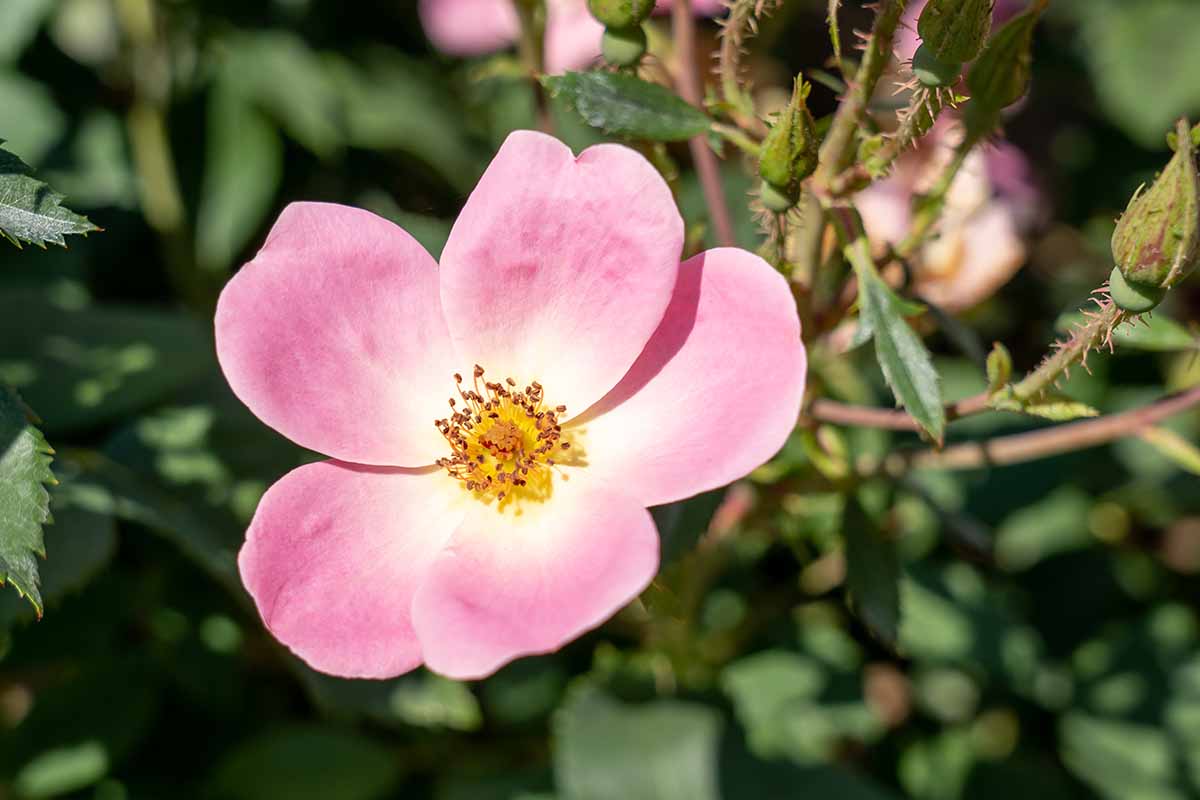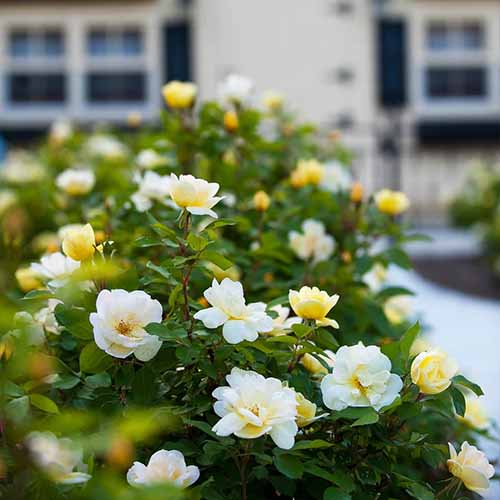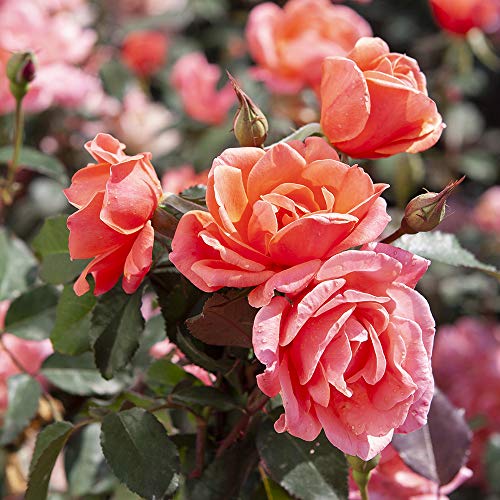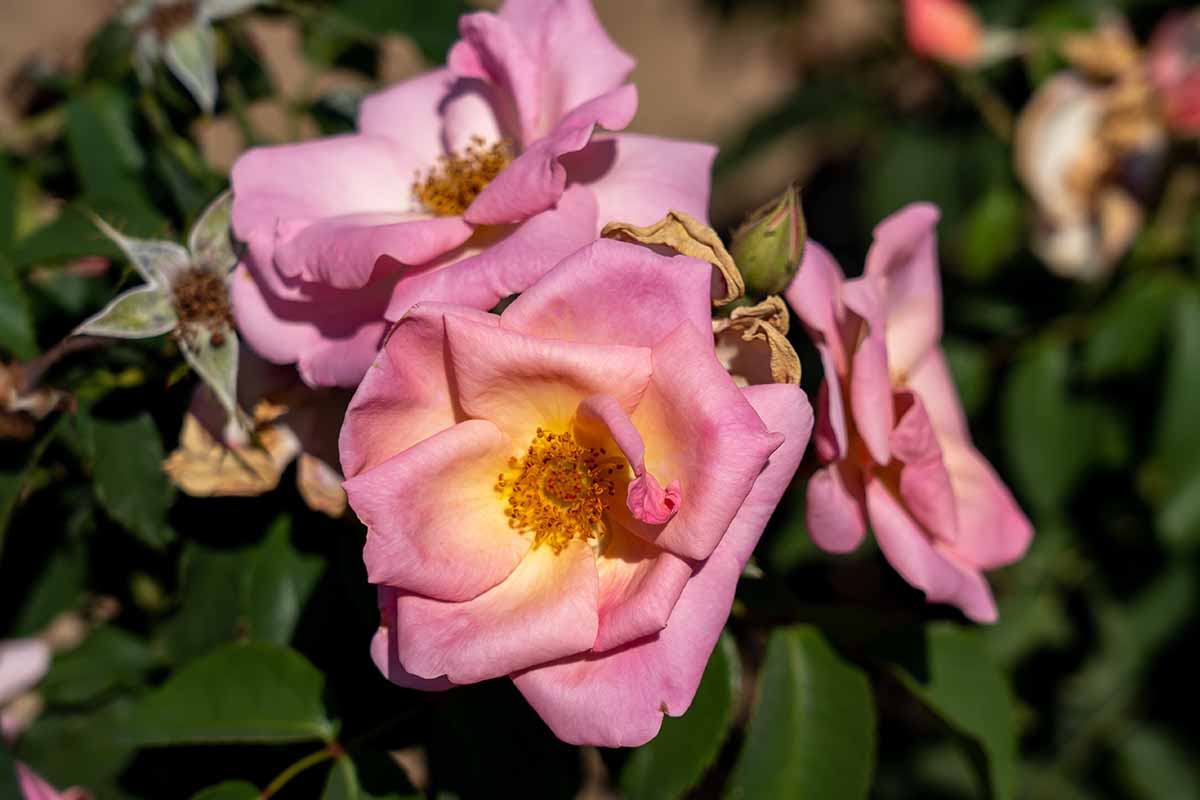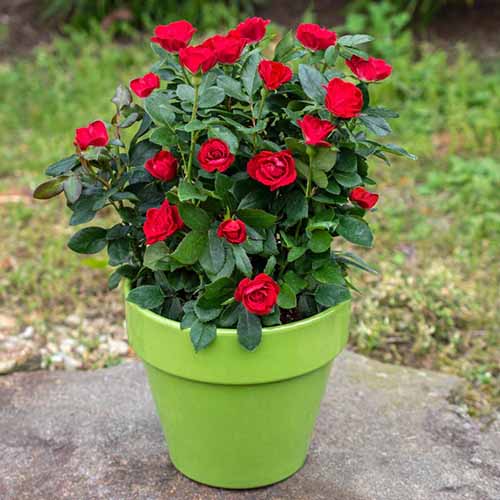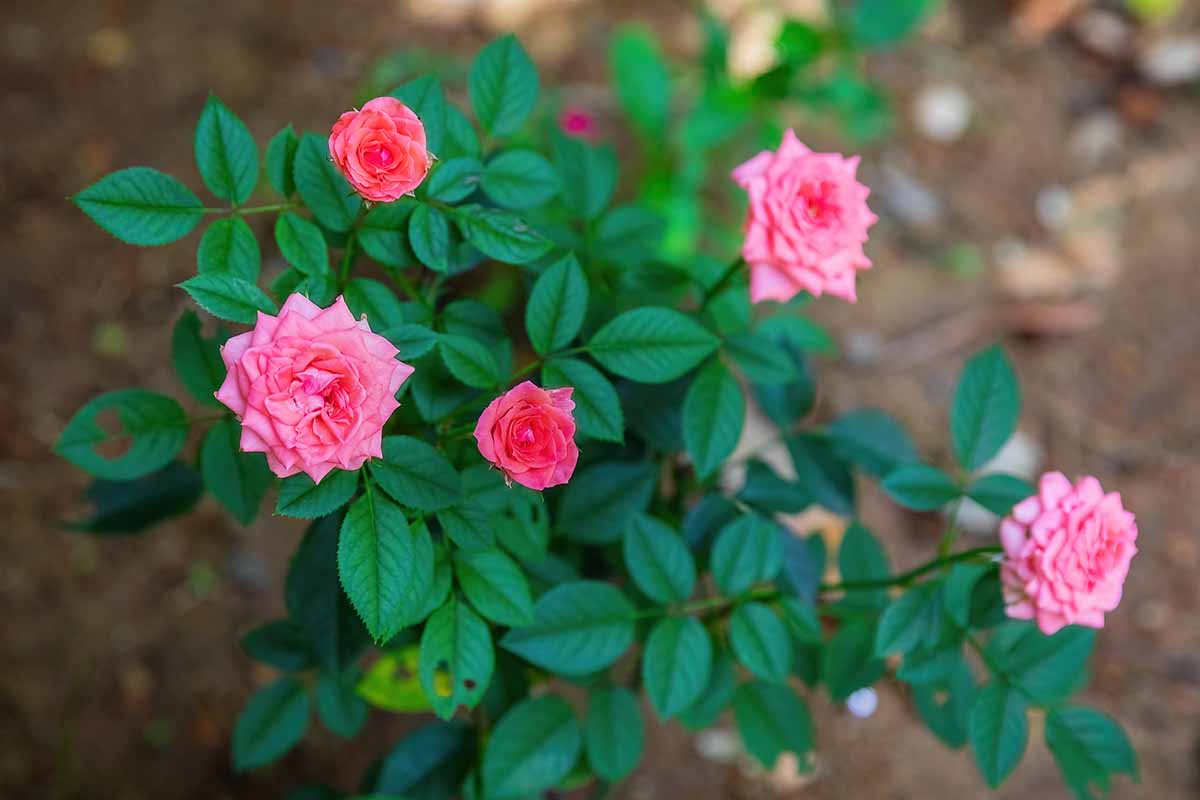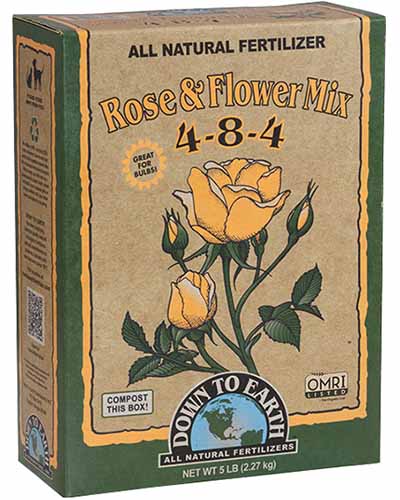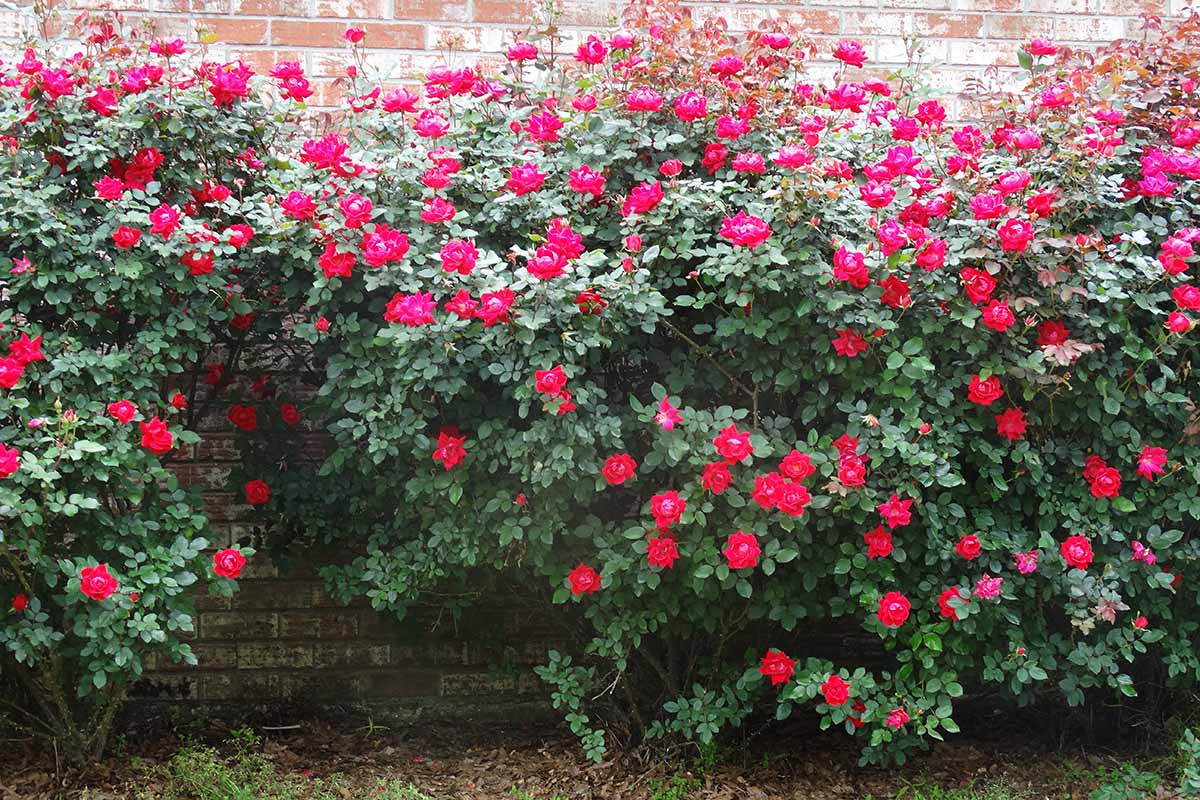Those of you who remember gardens in the ‘80s know that roses had fallen out of favor. People saw them (justifiably, sometimes) as fussy, difficult, and ridiculously tender. We link to vendors to help you find relevant products. If you buy from one of our links, we may earn a commission. Most of them bloomed once for a short time and then needed deadheading to return the next year. Until they came back, you had a fairly boring plant that didn’t add much to the yard. Then, along came Knock Outs. Suddenly, people who couldn’t grow a rose to save their life could have big, beautiful plants that bloomed all summer long and needed hardly any maintenance. It’s hard to overstate how much of an impact this line of cultivars has had on the modern rose market. If you are looking to grow one in your yard or you’re just curious about where they came from and what sets them apart, this guide has you covered. Here’s everything we’re going to chat about: Are you ready to become a Knock Out expert? Let’s jump right into the plant’s fascinating history.
Where Did Knock Outs Come From?
Many of the roses we know and love today were bred by horticulturalists or scientists. But what are arguably some of the most successful of all time were bred by a hobbyist with no technical training. Will Radler fell in love with roses while reading a Jackson & Perkins catalog in the 1950s. At just nine years old, he was cognizant of the fact that while his grandpa had the catalog, he didn’t grow roses in his own garden. Radler convinced his family to buy him a rose plant, but he quickly discovered that he was the only one his age who seemed to share his passion. At the time, these plants were considered fussy and old-fashioned, but Radler didn’t give up on them just because his friends and family didn’t share his interest. He maintained his interest through college and beyond, when he worked at the Milwaukee County Parks Department. In 1974, he started his rose breeding adventures in his basement. After over a decade of work, Radler unlocked the code to commercial success with “89-20.1,” which turned out to be a hardy, long-blooming, disease-resistant shrub with pinkish-red blossoms. He eventually named it ‘Radrazz.’ Star Roses and Plants in Philadelphia took a chance on the new creation and started selling it in 2000. Right away, it was a massive success with gardeners. Since it was introduced commercially, nearly a billion of the shrubs have been sold in stores across the country, including big box retailers like Lowe’s and Home Depot, and many other colors along with one miniature have been introduced. That’s not to say that others hadn’t been out there as well, doing the hard work to create tough roses. Griffith Buck, David Austin, and Wilhelm Kordes were all famously laboring for decades to improve existing types. Both Radler and Buck felt that if a plant is too difficult to grow, people simply won’t grow it anymore, and they used this as a guiding principle. While Buck created some equally hardy and pest-resistant cultivars, Radler found the magic combination that converted even the most resistant growers. Today, he continues his efforts, trying to bring new options like spotted and purple roses to market, two features that have eluded breeders.
The Benefits and Drawbacks
Knock Outs can grow in places where most people would never have dreamed of planting a rose in the past. If you suggested planting an Old World cultivar in a parking strip 50 years ago, you would have been laughed out of the room. But parking strips and other arid areas are no challenge for Knock Outs. Gardeners wouldn’t have dreamed of putting roses in parks and commercial raised planters back in the day either, but now they’re a common sight at shopping malls and in schoolyards. They’re simply low-maintenance, disease-, and drought-resistant enough that you can place them where other types would falter. If you have always wanted a rose bush but you’ve hesitated because you hear they’re fussy, this series of cultivars may convert you. On top of their toughness, they’re self-cleaning – which means you don’t need to deadhead them – and they bloom all season long. They also don’t require any complex pruning and need far less fertilizer than some other types. All that said, some purists feel Knock Outs aren’t worthy of the name Rosa. They argue that roses should be a bit fussy and that’s what sets them apart from other flowers. “Real” roses, they say, have a pleasing fragrance, long stems, and breathtaking blossoms. These flowers have little, if any, fragrance, short stems, and admittedly simple flowers. While critics say Knock Outs don’t have any scent, they do actually produce an extremely subtle, sweet fragrance. While it isn’t characteristically rose-scented, it’s certainly pleasant, if a bit mild. The newer ‘Sunny’ and ‘White’ cultivars have a slightly stronger scent. You also won’t find any fully double, frilly blossoms or any stunning ombre petals here (yet!). The success of Knock Outs has also made it difficult for people who want something old-fashioned to locate a classic cultivar, since many big box stores and nurseries prefer to keep these hardy best-sellers in stock. Additionally, these roses tend to dominate gardens across North America. Not only do these two facts mean we are losing plants that have been around for decades, but a lack of biodiversity is never a good thing.
Red
You have one guess to figure out what makes this particular plant stand out. Did you say that it might have red flowers? You got it! ‘Radrazz’ is the original and features cherry-reddish to hot pink petals on single blossoms. This plant can grow up to four feet tall and wide, and is hardy down to Zone 5a. ‘Radrazz’
Pink
‘Radcon’ is just like the red cultivar, except, of course, the petals are pink. This isn’t a shy, retiring pink, either. The flowers are bright and bold. ‘Radcon’
Double
Knock Outs are sometimes criticized as having flowers that are too simple and small. While not everyone needs or wants big, fully double, frilly blossoms, those who want something a little fuller can turn to the double option. These shrubs come in red (known as ‘Radtko’) or pink (called ‘Radtkopink’) with double flowers. Each flower has about 20 petals, making these fuller than their cousins. For reference, roses can have as few as four petals each, while some very full double flowers can have 100 or more. Slightly more cold hardy than the red and pink originals, and growing well down to Zone 4b, these reach about four feet tall and wide at maturity. ‘Radtko’ Add the red version to your garden by heading over to Home Depot for a single-, two-, or three-gallon pot. ‘Radtkopink’ Fast Growing Trees carries the same size options in the pink version.
Rainbow
Beautiful Rainbow, or ‘Radcor,’ has bright orangish-pink blossoms with a bright yellow center. The foliage is deep, dark green all summer long, but it emerges bronze in the spring, adding to the seasonal interest. Additionally, the plant has an extremely compact growth habit, even more so than the rest of its family. Even still, it grows to the same four by four size that most others do. In other words, the branches and leaves grow more closely together, giving the plant a more dense appearance despite being the same size as its cousins. It can be planted in gardens down to Zone 4a.
Blushing
The “blushing” Knock Out ‘Radyod’ starts out medium pink before fading to pale pink. It features the same four-foot-tall and wide growth habit as its friends, but the foliage has a distinct blue hue that helps it stand out. It’s always nice to offer something special that your siblings don’t have, right? ‘Radyod’ This variety is hardy to Zone 5a. Home Depot carries this blushing beauty in a gallon-size container.
Sunny
If you miss having a scent attached to your flowers, pick the pretty Sunny. It emits a faint citrus fragrance from the yellow blossoms that start as bright yellow buds, and rapidly fade to pale cream as they open. ‘Radsunny’ has an upright growth habit and stretches a foot wider than the rest of the family, while still reaching just four feet tall at maturity. It’s hardy to Zone 4a. ‘Radsunny’ Need a little sunshine in your garden? Snatch a one-, two-, or three-gallon pot in a single or four-pack at Fast Growing Trees.
Coral
Slightly larger than the rest of the bunch, ‘Radral’ grows to four and a half feet tall and wide with matte, medium green leaves. But that’s not what makes it special. The brick orange blossoms start out bold and bright before fading to a pleasant coral color as they mature. ‘Radral’ This variety grows well down to Zone 5a, but in hot and humid climates, the color is even more dramatic.
Peachy
If you’re looking for a rose shrub that stays a bit more compact than other Knock Outs, ‘Radgor’ has a lovely mounding habit and only grows three feet tall and four feet wide. The petals themselves aren’t peach-colored, as you might expect. Instead, the overall impression is of a ripe peach thanks to the pink petals with a yellow center. This type’s hardy to Zone 4a.
White
‘Radwhite’ has true white blossoms on a plant with extremely dark green foliage, creating a pleasing contrast. Seriously, the young leaves are almost black, they’re so dark. Hardy to Zone 4a, this cultivar grows three-and-a-half feet tall and wide. ‘Radwhite’ Need some contrast in your life? Head to Fast Growing Trees for a gallon or three-gallon container.
Petite Red
‘Meibenbino’ was bred by Meilland, a well-known breeder, and is the first miniature Knock Out. It tops out at about 18 inches tall and can handle climates down to Zone 4a. And it’s not just the plant that’s petite. The flowers are correspondingly small. ‘Meibenbino’ Right now it only comes in fire-engine red, but knowing Knock Out, we’ll have more colors in no time. If you need just a petite amount of color for your patio or garden, Fast Growing Trees carries two quart or two-gallon containers.
Tree
In addition to the standard shrubs, you can find Knock Outs that have been pruned into trees, like the three-to-four-foot ‘Sunny’ option at Fast Growing Trees. ‘Radsunny’ Tree They’ll have the same hardiness, colors, and foliage as the selected cultivar. Learn more about tree roses in our guide.
Planting and Care
All Knock Outs need full sun, the more the better, so pick a sunny spot. This isn’t the right type if you have a slightly shady location available. For full details on how to plant a rose, check out our comprehensive guide. Water well and keep an eye on the moisture level in the soil for the first few months. Knock Outs are drought resistant once established, but not when they’re young. Feed once with a rose-specific fertilizer after the flowers have faded in the fall. I’m a huge fan of Down To Earth’s line of products because they’re OMRI listed and CDFA certified, and come in a compostable box. Down to Earth Rose & Flower Mix Pick up their Rose & Flower Mix at Arbico Organics in one-, five-, or 15-pound containers. To prune, cut each cane back in the early spring when new growth is just starting to emerge. Prune the plant back to a third of the size you want it to reach during the coming growing season. For instance, if you want a three-foot-tall plant, cut it back to a foot tall. Then, cut out any small or diseased canes.
These Roses Help You Knock It Out of the Park
Don’t listen to the detractors. Knock Outs are lovely. They give you a simply beautiful look without all the maintenance and coddling that some other types demand. We love the look of you, hybrid teas, but you aren’t the easiest to grow. Knock Outs, on the other hand, take “easy” to a new level. Which member of the fam are you growing? Let us know in the comments section below! There’s a lot more to know about roses, as I’m sure you realize. The following guides can give you all the details you need:
How to Winterize RosesHow to Transplant Rose BushesHow to Plant Roses During the Fall25 of the Best-Smelling Roses to Enrich Your Garden
